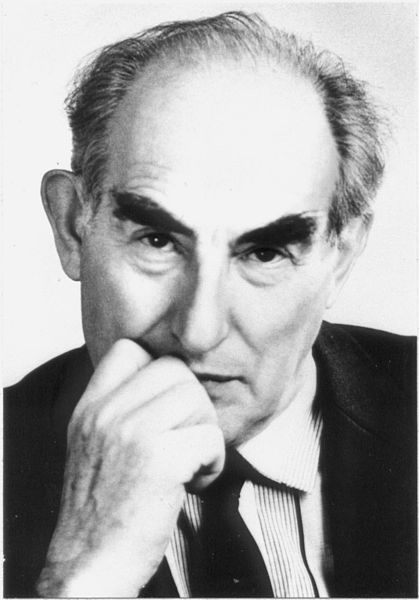Vitaly Lazarevich Ginzburg (Виталий Лазаревич Гинзбург; 1916-2009) was a Soviet physicist and Nobel Prize winner.
Ginzburg was born in Moscow. The son of Jewish parents, Ginzburg and his family faced persecution during his early years, which also saw the overthrow of the Tsar and the 1917 Revolution. His first job was working as an assistant in an X-ray laboratory. He went on to study at Moscow State University, eventually earning a Ph.D. and a D.Sc. Ginzburg then worked at the Lebedev Physics Institute of the Soviet Academy of Sciences.
Ginzburg feared for his life when in 1947 the Soviet newspaper Literaturnaya Gazeta accused him of crimes against the state, including “cosmopolitanism.” As he later wrote, “I can only guess what fate awaited me in this situation at that time. I think that it would have cost me dear, but I was saved by the hydrogen bomb.”
Ginzburg went to work on the Soviet hydrogen bomb project in 1948. The first Soviet H-bomb was successfully tested on August 12, 1953. Ginzburg later reflected on the Soviet nuclear program as a whole: “We thought at the time that we were working to prevent a monopoly on the atomic bomb – Hitler’s monopoly if he got the bomb before Stalin. The thought of what would happen if Stalin had a monopoly on atomic weapons somehow never entered my head. Scary thought. Stalin would seek to subjugate the entire world. I admit this may betray stupidity, but this stupidity was, back then, a common way of thinking in the Soviet Union.”
Following the death of Stalin in 1953, Ginzburg was reinstated as a member of the Soviet Academy of Sciences. In the 1950s, he researched superconductivity together with physicist Lev Landau, and the two discovered an equation which could predict the tolerance of a superconductor for a magnetic field. For this work, Ginzburg would be awarded the 2003 Nobel Prize in Physics “for pioneering contributions to the theory of superconductors and superfluids.”
During his career, Ginzburg also earned the Mandelstam Prize, the Lenin Prize, the Gold Medal of the Royal Astronomical Society, the Wolf Prize in Physics, the UNESCO Niels Bohr Medal, and the American Physical Society’s Nicholson Medal.
Vitaly Ginzburg died on November 8, 2009, in Moscow.





